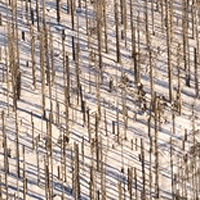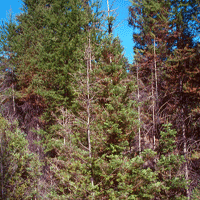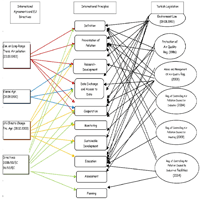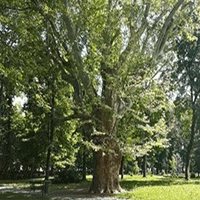
Means of combating forest dieback - EU support for maintaining forest health and vitality
A Requardt (1) , A Schuck (2), M Köhl (1)
iForest - Biogeosciences and Forestry, Volume 2, Issue 1, Pages 38-42 (2009)
doi: https://doi.org/10.3832/ifor0480-002
Published: Jan 21, 2009 - Copyright © 2009 SISEF
Technical Reports
Collection/Special Issue: Cost Action E29 Meeting 2008 - Istanbul (Turkey)
Future Monitoring and Research Needs for Forest Ecosystems
Guest Editors: Marcus Schaub (WSL, Birmensdorf, CH)
Abstract
All EU Member States face economic and ecological losses due to forest damages. Thus, combating forest dieback, as for example caused by the effects of climate change, is a contribution to human safety and well-being and the sustainable development of Europe. At the EU level several efficient and well established policy instruments are developed and implemented, which contribute to the prevention, mitigation and control of forest dieback. The most important EU instruments in this context are the Rural Development Regulation (Council Regulation (EC) No 1257/1999, replaced by the Council Regulation (EC) No 1698/2005) and the Forest Focus Regulation (Council Regulation (EC) No 2152/2003, expired in 2006). The article reviews main EU policy and financial instruments and evaluates the feasibility of combating various causes of forest dieback in Europe.
Keywords
Forest dieback, EU policy, Financial support, Prevention, Mitigation, Control
Authors’ Info
Authors’ address
M Köhl
University of Hamburg, Institute for World Forestry, Leuschnerstr. 91, D-21031 Hamburg (Germany)
European Forest Institute, Torikatu 34, 80100 Joensuu (Finland)
Corresponding author
Paper Info
Citation
Requardt A, Schuck A, Köhl M (2009). Means of combating forest dieback - EU support for maintaining forest health and vitality. iForest 2: 38-42. - doi: 10.3832/ifor0480-002
Paper history
Received: Mar 13, 2008
Accepted: Dec 09, 2008
First online: Jan 21, 2009
Publication Date: Jan 21, 2009
Publication Time: 1.43 months
Copyright Information
© SISEF - The Italian Society of Silviculture and Forest Ecology 2009
Open Access
This article is distributed under the terms of the Creative Commons Attribution-Non Commercial 4.0 International (https://creativecommons.org/licenses/by-nc/4.0/), which permits unrestricted use, distribution, and reproduction in any medium, provided you give appropriate credit to the original author(s) and the source, provide a link to the Creative Commons license, and indicate if changes were made.
Web Metrics
Breakdown by View Type
Article Usage
Total Article Views: 51330
(from publication date up to now)
Breakdown by View Type
HTML Page Views: 42218
Abstract Page Views: 3373
PDF Downloads: 4664
Citation/Reference Downloads: 54
XML Downloads: 1021
Web Metrics
Days since publication: 6176
Overall contacts: 51330
Avg. contacts per week: 58.18
Citation Metrics
Article Citations
Article citations are based on data periodically collected from the Clarivate Web of Science web site
(last update: Mar 2025)
Total number of cites (since 2009): 10
Average cites per year: 0.59
Publication Metrics
by Dimensions ©
Articles citing this article
List of the papers citing this article based on CrossRef Cited-by.
References
Vulnerability and adaptation to climate change in Europe, European Environmental Agency, Technical Report 7/2005, pp. 79.
Gscholar
The condition of forests in Europe, 2004 Executive Report. Federal Research Centre for Forestry and Forest Products (BFH), United Nations Economic Commission for Europe, Geneva, Switzerland, pp. 36.
Gscholar
The condition of forests in Europe, 2006 Executive Report. Federal Research Centre for Forestry and Forest Products (BFH), United Nations Economic Commission for Europe, Geneva, Switzerland, pp. 33.
Gscholar
State of Europe’s forests 2003. The MCPFE Report on Sustainable Forest Management in Europe, pp. 114.
Gscholar
State of Europe’s forests 2007. The MCPFE report on Sustainable Forest Management in Europe, Jointly prepared by the MCPFE Liaison Unit Warsaw, UNECE and FAO, Warsaw, Poland, pp. 263.
Gscholar
Forest resources of Europe, CIS, North America, Australia, Japan and New Zealand (TBFRA 2000). Main report, UNECE/FAO Contribution to the Global Forest Resources Assessment 2000, United Nations, New York and Geneva, pp. 445.
Gscholar

















